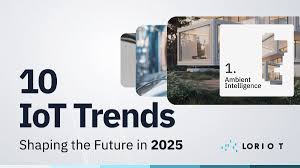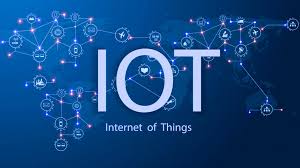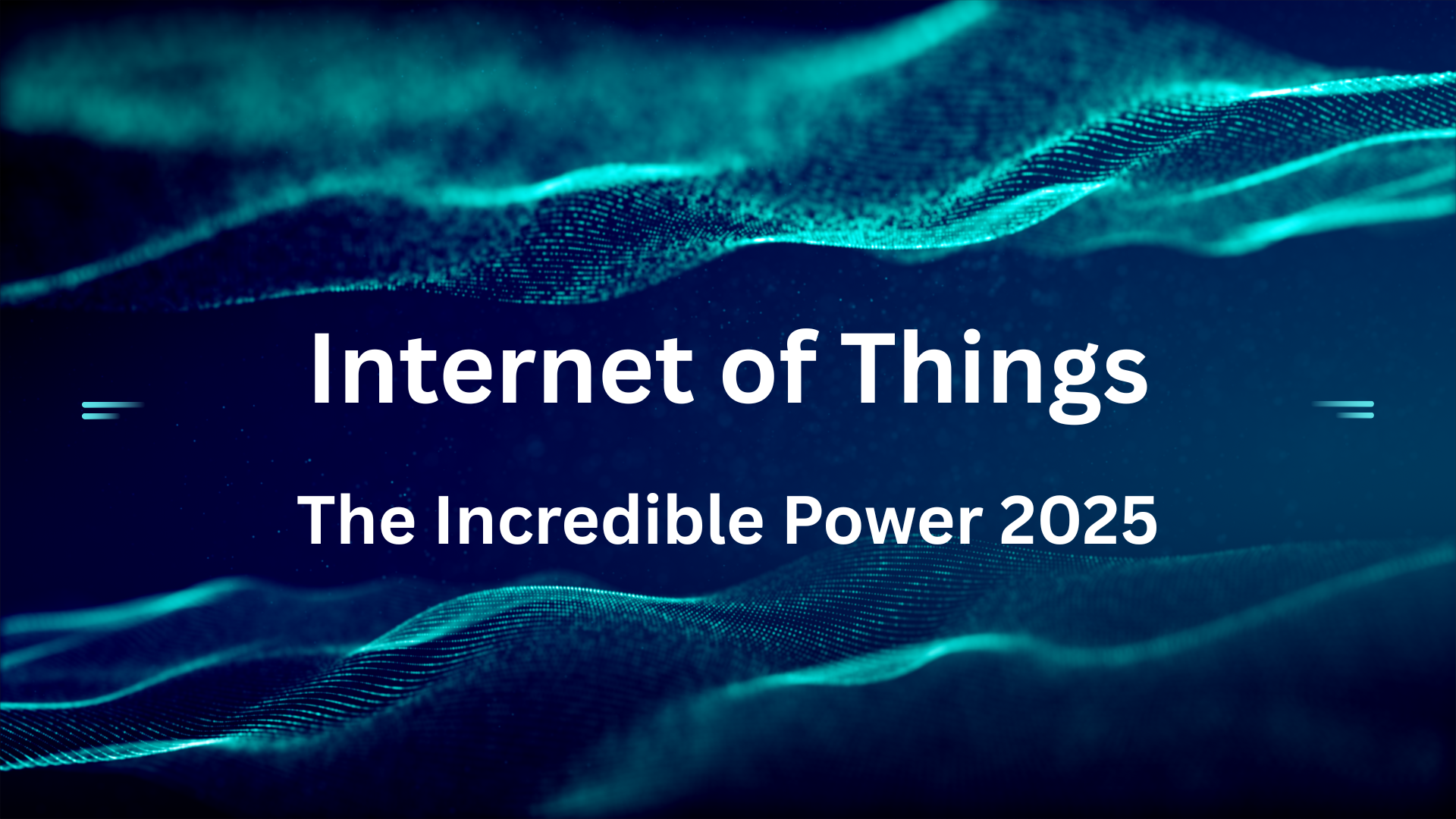What Is the Internet of Things?
Have you ever wished your refrigerator could send you a text when you run out of milk? Introducing the Internet of Things (IoT), a digital upgrade of commonplace items that converse with one another like tech-savvy gossips. The Internet of Things (IoT) is the network of physical objects—think smartwatches, thermostats, or even your coffee maker—that are linked to the internet and gather and exchange data to make life simpler, more intelligent, and occasionally even futuristic.
With over 15 billion connected devices globally in 2025, the IoT market is expected to grow to 30 billion by 2030, according to experts (source: Statista). IoT is creating a network of connectivity that is changing the way we live, work, and play, from smart homes to smarter cities. Wondering how this magic occurs? Let’s get into the specifics of the Internet of Things.
Read more: Edge AI and IoT in 2025 — All You Need to Know
How Does IoT Work?
IoT is more than just a catchphrase; it’s a sophisticated system that makes your devices smarter than the typical bear. Devices, connectivity, and data processing are the three main pillars upon which the Internet of Things depends. Here’s how they work together to improve the connections in your life.
Devices and Sensors
Smart devices—items with sensors, software, or actuators embedded—are the foundation of the Internet of Things. These could be anything from a smart thermostat that regulates the temperature in your house to a fitness tracker that keeps track of your steps. Actuators cause things to happen, like turning on the air conditioner, while sensors gather data, like the temperature of your room or your heart rate.
Connectivity
Data must be sent somewhere after it has been collected by a device. Herein lies the role of connectivity. IoT devices communicate with a central system or with one another via Wi-Fi, Bluetooth, 5G, or even low-power networks like Zigbee. “Hey, cloud, play some jazz!” is what your smart speaker would say if it had connectivity.
Data Processing
When data is processed, the true magic occurs. IoT devices transmit their data to a local server or the cloud, where it is analyzed to initiate actions. For instance, your smart fridge may ping your grocery list app when it detects that you are running low on eggs. The Internet of Things is so powerful because of this smooth data flow.
How IoT Works: A Snapshot
|
Component |
Role |
Example |
|---|---|---|
|
Devices/Sensors |
Collect data |
Smart thermostat measures temperature |
|
Connectivity |
Transmits data |
Wi-Fi connects thermostat to the cloud |
|
Data Processing |
Analyzes and acts |
Cloud adjusts thermostat settings |
Want to geek out more on IoT tech? Check out our guide to smart home automation.

Why IoT Matters
The goal of the Internet of Things is to make life more sustainable, efficient, and, to be honest, a little more fun. It is not just about fancy gadgets. IoT has something for everyone, whether you’re a grandparent with a connected doorbell or a teenager with a smartwatch.
Everyday Life
IoT is sneaking into your daily routine faster than you can say “Alexa, turn off the lights.” Here’s how it’s making life better:
-
Convenience: Smart speakers like Amazon Echo let you control your home with voice commands.
-
Health: Wearables like Fitbit track your steps, sleep, and even stress levels.
-
Savings: Smart thermostats like Nest save energy by learning your habits (Energy Star).
-
Safety: Connected security cameras let you monitor your home from anywhere.
Business and Industry
IoT is transforming industries and isn’t just for couch potatoes. IoT sensors are used in factories to monitor machinery, which reduces downtime by 30 to 50% (source: McKinsey). Real-time inventory tracking is done by retailers, and farmers use IoT to maximize crop yields. The Internet of Things is the key to efficiency in everything from logistics to healthcare.
See our smart industry guide to learn more about the business impact of IoT.

IoT in Action: Real-World Examples
The Internet of Things isn’t some sci-fi dream—it’s already here, making waves in homes, cities, and beyond. Here are some real-world examples that’ll blow your mind:
-
Smart Homes: Control lights, locks, and appliances with a tap on your phone. Brands like Philips Hue make it easy.
-
Smart Cities: Cities like Singapore use IoT to manage traffic, reduce congestion, and even monitor air quality.
-
Healthcare: IoT-enabled medical devices, like insulin pumps, monitor patients remotely, improving care.
-
Retail: Amazon Go stores use IoT to create cashier-less shopping—grab and go, no lines!
-
Agriculture: IoT sensors track soil moisture, helping farmers save water and boost yields.
These examples show how the Internet of Things is knitting our world together, one connected device at a time. Want to explore smart home setups? Read our top IoT devices for 2025.
Challenges of IoT
As awesome as the Internet of Things is, it’s not all rainbows and smart fridges. There are some hurdles to overcome, and they’re worth talking about.
Security Concerns
With billions of devices chatting online, hackers are licking their chops. IoT devices can be vulnerable to cyberattacks—remember that time a smart baby monitor got hacked? Yikes. Manufacturers are stepping up, but securing IoT networks is a cat-and-mouse game. Always update your devices and use strong passwords to stay safe.
Privacy Issues
Have you ever thought your smart speaker is listening too well? IoT devices generate a lot of data, which raises privacy issues. What are they doing with your information, and who has it? It is your responsibility to read those privacy policies, even though regulations like the GDPR are tightening the screws. Are you worried about your online safety? Take a look at our cybersecurity advice.
Read more: Top 10 IoT Projects 2025 | Useful IoT Projects | Applications of …
The Future of IoT
The future of the Internet of Things appears to be bright, and it is only just getting started. Anticipate smarter homes, autonomous vehicles that can communicate with traffic signals, and even Internet of Things-powered medical systems that can detect diseases before you even sneeze by 2030. 5G networks will boost connectivity, resulting in a faster and more dependable Internet of Things. AI will also enable smarter IoT devices, such as a virtual assistant that is more familiar with you than your mother.
But it’s not just about cool technology; by optimizing energy use or enhancing disaster response with real-time data, IoT could address major issues like climate change. Our world will become more connected, more efficient, and perhaps even a little funnier thanks to the Internet of Things (think of your toaster making fun of you for burning toast). Do you want to remain on the cutting edge? Examine our upcoming technological trends.
FAQs About the Internet of Things
1. What is the Internet of Things in simple terms?
The Internet of Things (IoT) connects everyday objects—like your fridge or thermostat—to the internet, letting them collect and share data to make life easier. Think of it as giving your gadgets a brain and a Wi-Fi connection to talk to each other.
2. How does IoT impact daily life?
IoT makes daily life more convenient by automating tasks. Smart thermostats save energy, wearables track health, and connected cameras boost security. It’s like having a personal assistant in every device, minus the coffee runs.
3. Is IoT secure?
IoT security is a mixed bag. While devices are getting safer, they can be hacked if not updated or protected. Use strong passwords, keep software updated, and choose reputable brands to minimize risks.
4. What are some examples of IoT devices?
Common IoT devices include smart speakers (like Alexa), fitness trackers (like Fitbit), smart thermostats (like Nest), and connected security cameras. These gadgets make your home smarter and your life easier.
5. What’s the future of IoT?
The future of IoT is bright, with faster 5G networks, smarter AI, and more devices. Expect self-driving cars, smarter cities, and healthcare innovations that predict issues before they happen—all powered by IoT.
Read more: Fastest Android Browsers Best in 2025
Conclusion
The Internet of Things has arrived and is connecting our homes, workplaces, and cities in ways we never could have predicted. It is no longer a sci-fi dream. IoT is making life more efficient, convenient, and slightly more enjoyable, from smart refrigerators that remind you to buy milk to sensors that save energy in factories. However, great connectivity also comes with great responsibility; the IoT party’s safety depends on security and privacy.

